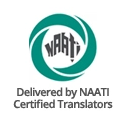
A Vibrant Language Rooted in Tradition
Te Reo Māori, also known as Māori language, is the indigenous language of Aotearoa (New Zealand) spoken by 186,000 people at some capacity. Around 186,000 people speak Te Reo Māori to some degree, carrying on a linguistic tradition that stretches back centuries.
It is said to have originated around 1300 AD, when Polynesian ancestors arrived in New Zealand. They brought with them their ancestral language, whose distinct dialect evolved and adapted to their new environment, separating from other Polynesian tongues, becoming Te Reo Māori as we know it today.
A Tradition of Oral History
For centuries, Te Reo Māori thrived without a written form. Ancestral knowledge, stories, and traditions were meticulously passed down through generations. Intricate carvings, called “Whakairo,” served as memory palaces, their swirling spirals and symbolic shapes encoding narratives and histories. Traditional Te Reo Māori songs called “Waiata” carried knowledge and emotion across time.
The arrival of missionaries in the 19th century introduced a Latin script-based writing system, adapted to accommodate the unique sounds of Te Reo Māori. For instance, the macron (ā, ē, ī, etc.) was introduced to denote long vowels, a distinction absent in the original script. Despite these adjustments, the Latin script provided a powerful tool for preserving and sharing Te Reo Māori.
Decline and Revitalization
The 20th century witnessed a period of decline for Te Reo Māori. Colonization and assimilation policies pushed the language to the brink of silence. Schools discouraged its use, and many Māori families felt pressure to speak English.
However, a powerful Māori language revitalization movement emerged in the 1980s. This resurgence, fueled by a desire to reclaim their cultural heritage, breathed new life into Te Reo Māori. Today, passionate advocates are ensuring the language thrives once more. However, UNESCO has deemed it a language that is “Definitely Endangered.”
Symphony of Sounds
Te Reo Māori utilizes a specific set of consonants that contribute to its unique sound. One key difference is the “wh” sound, absent in English. This sound adds depth to important words like “whānau” (family). Additionally, Te Reo Māori features a rolled “r” sound, distinct from the typical English “r,” creating a more vibrant soundscape.
Maori Legends
Maori culture thrives on legends such as that of Ranginui (the sky father) and Papatūānuku (the earth mother) who are locked in a tight embrace. Their children, the gods, desired separation to create the world as we know it. Through their forceful separation, Ranginui rose high above, creating the sky, and Papatūānuku remained below, forming the earth. This separation brought light and life to the world, but also a deep longing between the sky father and earth mother, expressed in the constant weeping that creates rain and nourishes the land.
Preservation Efforts for the Future
The future of Te Reo Māori brims with hope. Initiatives promoting its use are gaining momentum. Kura Kaupapa (Māori immersion schools) are nurturing a new generation of fluent speakers. Digital resources like online dictionaries and language apps such as Memrise and Duolingo make learning Te Reo Māori more accessible than ever. Even popular media is embracing the language. Television shows and movies are incorporating Te Reo Māori, showcasing its beauty and relevance to a wider audience.
Our Translation Services
At TranslateSwift, we recognize the importance of preserving cultural heritage through accurate and sensitive translations. Our team of expert Te Reo Māori linguists can assist you with any translation needs, ensuring clear communication that bridges cultures and languages.
Other Languages
- English
- Spanish
- German
- Dutch
- French
- Italian
- Afrikaans
- Albanian
- Amharic
- Arabic
- Armenian
- Azerbaijani
- Basque
- Belarusian
- Bengali
- Bosnian
- Bulgarian
- Cantonese
- Catalan
- Cebuano
- Chichewa
- Chinese - Simplified
- Chinese - Cantonese
- Chinese - Traditional
- Chinese - Mandarin
- Corsican
- Croatian
- Creole
- Czech
- Danish
- Dari
- Esperanto
- Estonian
- Farsi
- Filipino
- Finnish
- Frisian
- Galician
- Georgian
- Greek
- Gujarati
- Haitian Creole
- Hausa
- Hawaiian
- Hebrew
- Hindi
- Hmong
- Hungarian
- Icelandic
- Igbo
- Indonesian
- Irish
- Japanese
- Javanese
- Kannada
- Kazakh
- Khmer
- Korean
- Kurdish
- Kyrgyz
- Lao
- Latin
- Latvian
- Lithuanian
- Luxembourgish
- Macedonian
- Malagasy
- Malay
- Malayalam
- Maltese
- Maori
- Marathi
- Mongolian
- Montenegrin
- Myanmar
- Nepali
- Norwegian
- Odia
- Pashto
- Persian
- Polish
- Portuguese
- Punjabi
- Romanian
- Russian
- Samoan
- Scots Gaelic
- Serbian
- Sesotho
- Shona
- Sindhi
- Sinhala
- Slovak
- Slovenian
- Somali
- Sundanese
- Swahili
- Swedish
- Tajik
- Tagalog
- Tamil
- Telugu
- Thai
- Turkish
- Ukrainian
- Urdu
- Uyghur
- Uzbek
- Vietnamese
- Welsh
- Xhosa
- Yiddish
- Yoruba
- Zulu
